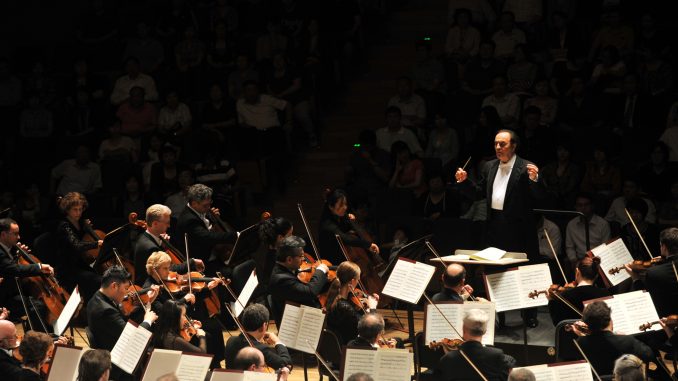
The Ulster Performing Arts Center (UPAC) was roaring with excitement from a standing ovation after the Hudson Valley Philharmonic Orchestra (HVP) completed Ludwig van Beethoven’s Symphony No. 9. This incredible piece of music and history, originally commissioned by the Philharmonic Society of London in 1817, was Beethoven’s final symphony that he completed in 1824 and performed later that year.
This symphony emerged from other completed pieces that Beethoven had written, which critics said were musical “sketches,” or a rough outline, for the future symphony.
His ninth symphony is considered his greatest and loudest work, due in part to him going deaf in 1798. The entire performance is about an hour in length.
This piece stands out from other of Beethoven’s and other composers’ compositions because he incorporates a choir and vocal soloists that sing the famous “Ode to Joy” chorale in German.
Originally written in 1785 by the German poet, Johann Christoph Friedrich von Schiller, the “Ode to Joy” text celebrates the unity of mankind. However, Beethoven slightly modified some of the lyrics.
“O Freunde, nicht diese Töne! / Sondern laßt uns angenehmere anstimmen / und freudenvollere. / Freude! Freude!”
The English translation sings: “O friends, not these sounds! / Let us instead strike up more pleasing / and more joyful ones! / Joy! / Joy!”
Other than the famous chorale movement, the first movement, “Allegro ma non troppo, un poco maestoso,” which translates from Italian to “fast moving but not too fast, a little majestic,” opens with a recognizable theme played in the strings and almost sounds like the ensemble is tuning.
The second movement, “Scherzo: Molto vivace – Presto,” instructs the ensemble to play “very lively – very fast.” Another recognizable theme, this movement is played in “A Clockwork Orange (1971),” where Alex, played by Malcolm McDowell, is sitting by a record player and takes out a cassette tape of Beethoven’s ninth symphony.
The third movement, “Adagio molto e cantabile,” which means to play “slowly and with a singing style,” is lyrically slow and shows the progression of classical music into romantic music; Beethoven is considered the bridge between the two eras of music.
“The poet and composer E.T.A. Hoffman, who lived during Beethoven’s time wrote, ‘Beethoven’s music sets in motion the lever of fear, of awe, of horror, of suffering and awakens just that infinite longing which is the essence of Romanticism,’” stated the program notes.
The fourth movement, “Recitative,” starts out very loud in a ¾ time signature with the woodwinds repeating eighth notes. Later, we hear the “Ode to Joy” tune played in the bass and cellos, then the violas and low woodwinds are added and finally the upper woodwinds and strings recite the familiar song once more. The tune is continuously building up to first bring in the baritone vocal soloist, whose part is responded to by the full choir. The other soprano, alto and tenor soloists join in afterwards.
For this performance, the HVP invited and combined the Vassar College Choir and the Cappella Festiva Chamber Choir to have a 105-person choir.
Within the HVP are a few SUNY New Paltz music faculty members, including Dr. Joel Evans on oboe and English horn, concertmaster Dr. Carole Cowan on violin, assistant concertmaster Dr. Marka Young on violin and principal cellist Susan Seligman.
“This is an incredibly massive piece to perform,” Evans said.
For more information about upcoming events and the HVP, visit Bardavon.org/.
